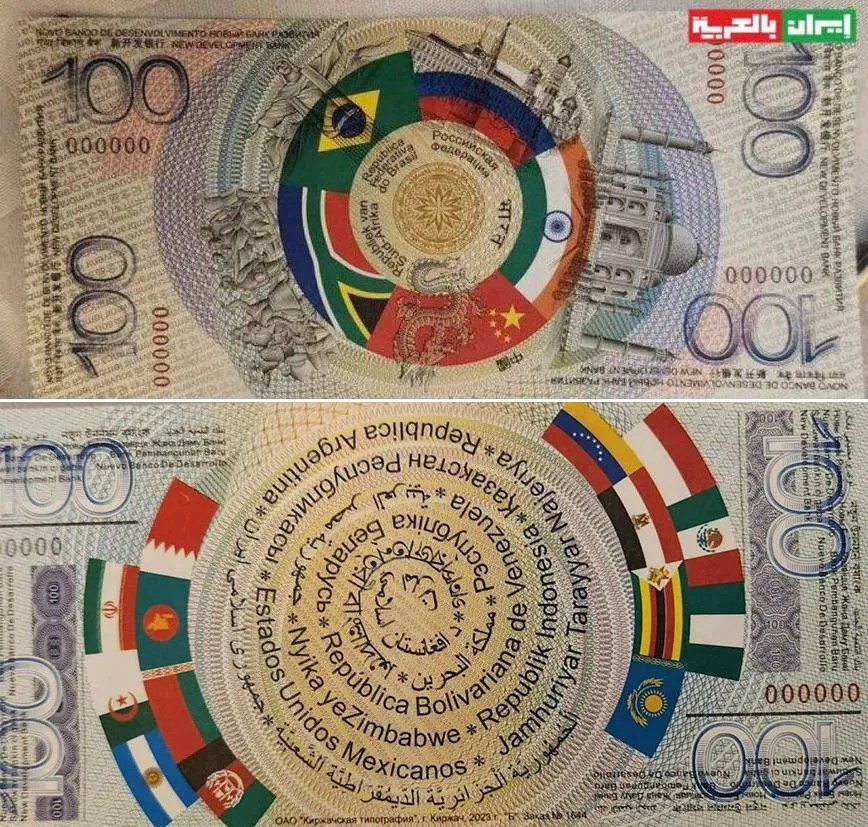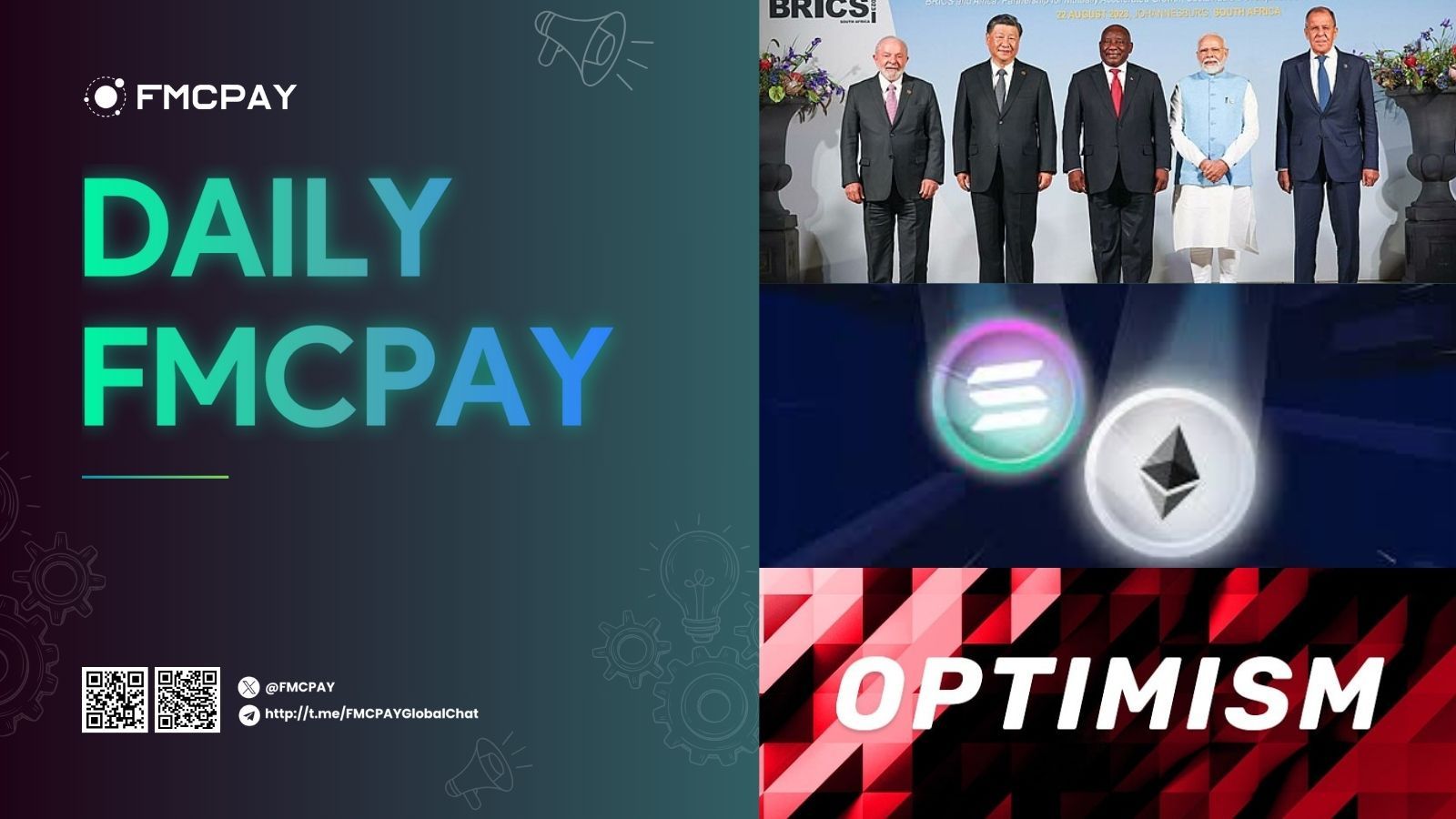Several prominent participants in the 16th annual BRICS Summit in Kazan, Russia, talked on the significance of cryptocurrencies in de-dollarization. The necessity of new digital platforms was emphasized by the presidents of China, Iran, and Russia.
BRICS Pay, a payment solution platform built on blockchain technology and CBDCs, is at the center of this de-dollarization initiative.
BRICS Summit 2024
De-dollarization has emerged as a key subject during the sixteenth annual BRICS Summit, which has officially begun in Kazan, Russia. Days before, Russian President Vladimir Putin spoke about the use of central bank digital currencies (CBDCs) and cryptocurrency assets for safe payments at the BRICS Business Forum. The subject has now expanded much more:
“There is an urgent need to reform the international financial architecture, and BRICS must play a leading role in promoting a new system that better reflects the profound changes in the international economic balance of power,” said Chinese President Xi Jinping.
JUST IN: 🇨🇳 Chinese President Xi Jinping says BRICS must promote a new financial system.
“There is an urgent need to reform the international financial architecture, and BRICS must play a leading role in promoting a new system that better reflects the profound changes in the… pic.twitter.com/dXFoZ1Rhil
— BRICS News (@BRICSinfo) October 23, 2024
The new BRICS Pay system is at the heart of this transformation. To provide payment choices, this suggested approach will make use of blockchain technology and CBDCs.
BRICS members have long talked about the system as a de-dollarization tactic, even if it is not yet in use. At the Summit, a prototype of a potential new money for this system was also displayed.

To put it another way, conversations are no longer only hypothetical. The importance of completing these alternative economic platforms was specifically covered in the BRICS Business Council’s annual report.
A system based on CBDCs, such as the digital yuan, was promoted by certain legislators. This is similar to El Salvador’s primary motivation for legalizing Bitcoin: more economic autonomy.
According to Matthew Sigel, VanEck’s Head of Digital Assets Research, there are other assets that are debatable than CBDCs. In an effort to circumvent dollar hegemony, Russian MPs have proposed the use of Bitcoin and other assets to pay for imports. When discussing the future economic infrastructure of the BRICS, cryptocurrency is constantly at the forefront of the conversation.
Prominent members have embraced the de-dollarization plan, despite the fact that BRICS has been viewed as “an informal club” rather than a tangible power. Iranian President Masoud Pezeshkian, for instance, suggested “international mobile payment systems,” “a shared e-commerce platform,” and other such digital solutions, according to Iranian state media network IRNA.
The BRICS Summit might bring together enough support and collaboration from China, Russia, Iran, and many other participants to further de-dollarization initiatives. All of the major economies’ representatives have gathered to talk about blockchain and cryptocurrency solutions.
Solana overtakes Ethereum in daily fees, thanks to AI meme coin craze
With the AI meme coin craze fueled by GOAT increasing network traffic, Solana’s daily fees have topped $4.1 million, surpassing Ethereum.
Solana (SOL), a rival of Ethereum Layer-1, is causing a stir with its sharp increase in daily income. Consequently, the price of SOL has increased by 5.62% as of this writing, reaching $174 and a market value of $82 billion. Additionally, the SOL blockchain is becoming the go-to platform for AI meme coin launches.
Solana topples Ethereum in daily fees
According to the most recent data from IntoTheBlock, the Solana network’s daily fees have surpassed $4.1 million, now surpassing Ethereum’s daily costs.

The craze for AI meme currencies on the Solana blockchain has been the main cause of this enormous increase in network costs. The Goatseus Maximus (GOAT) coin, which has increased by more than 40% to reach its all-time high of $0.7009 and its market capitalization surpassing $700 million, is presently one of the largest contributors.
Within two weeks of its inception, the GOAT meme coin—which was pushed by the AI bot “Truth Terminals”—achieved this enormous milestone. The GOAT token was established on the Pump on October 10 by an unidentified developer.enjoyable platform. David Zimmerman, a DeFi analyst at K33 Research, published the following in a study on Wednesday:
“A whole narrative was born from the intersection of AI, memecoins, and crypto. AI memecoins have gained massive attention over the last two weeks, with many tokens reaching over $100 million market cap.”
SOL price rally to all-time high
Recently, the price of Solana has gained significant traction, surpassing the prices of several of the other cryptocurrencies, like Bitcoin (BTC), Ethereum (ETH), and others. The SOL price has increased by an astounding 18% on the monthly chart, and bulls are aiming for a further surge to its highest points ever. The price of SOL may be headed for a parabolic rise to $2,000, according to some market analysts.
$SOL – I don’t know where you draw the trend lines but overly it looks bullish. If you can ignore some candles it definitely has a breakout structure. OBV still lagging a bit. pic.twitter.com/E32xoNiIS7
— IncomeSharks (@IncomeSharks) October 23, 2024
The open interest in Solana has increased by 13.7%, surpassing $3.4 billion, according to Coinglass statistics. Additionally, the amount of futures trade has increased by 25% to $9.54 billion during the past day.
The term “open interest” describes the digital asset’s unresolved futures wager. Determining if fresh capital is joining the market is beneficial. The SOL price increase can thus continue in the future since on-chain data are indicating encouraging trends.
Base to bring Optimism’s fault-proof system to enhance decentralization
The fault-proof technology will be launched by Coinbase’s layer-2 network Base, enabling users to independently verify the legitimacy of withdrawals.
In an effort to “pave the way towards more community participation,” the Ethereum-based network Base will include Optimism’s fault-proof technology, sometimes referred to as fraud proofs, on October 30. This will let users to confirm withdrawals without depending on reliable third parties.
Fault proofs are coming to Base mainnet on October 30th, marking a key milestone on the path to decentralization
This means anyone can monitor and permissionlessly challenge invalid withdrawals, removing the need for a trusted third party
The Base team has been collaborating…
— Base (@base) October 23, 2024
A major turning point for Base’s decentralization approach, the deployment, which was announced in an X post on October 24, would allow anybody to keep an eye on withdrawal transactions and contest them if they are seen to be unauthorized. Base highlights that the update is a change from the current approach, which allows output roots about the network’s status to be submitted exclusively by centralized proposers.
Permissionless output suggestions will become a fundamental component of the network with the new system implemented at Base in partnership with Optimism, enabling community members to make assertions regarding the condition of Base without depending on a centralized authority. According to Base’s technical documentation, users will also be able to contest false or inaccurate allegations via a decentralized system, encouraging wider community involvement in network security.
Fault proofs, which were initially used on Optimism, stop erroneous transaction data from being sent to Ethereum’s layer-1 blockchain. Coinbase’s Base network, which was constructed with the OP Stack from OP Labs, aims to establish a more community-driven economy in line with the larger objectives of decentralization throughout the Ethereum ecosystem.


